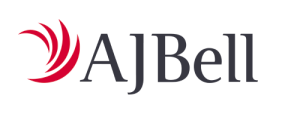Global markets advanced in October, supported by a late-month US-China trade truce and robust corporate earnings, though concerns around private credit and US regional banking created periodic volatility. The month witnessed significant market swings, with the S&P 500 suffering its worst daily decline since April’s Liberation Day turmoil: on 10 October, the index fell by 2.7% in local currency terms, amid escalating trade tensions, though it later recovered as diplomatic progress emerged. Late in the month, a meeting in South Korea between President Trump and President Xi proved pivotal, extending the tariff truce and reducing US fentanyl-related tariffs on China from 20% to 10%, while postponing Chinese export restrictions on critical materials.
Regional equity markets delivered broad gains, with Japan (5.1%) leading performance. This followed Sanae Takaichi’s election as LDP leader, and subsequent appointment as prime minister, which fuelled expectations of more expansionary fiscal policies. The US (4.8%) gained, in part due to sterling weakening against the US dollar. Notably, gains in US equities remained narrow: in local currency terms the equal-weighted S&P 500 fell 0.9%, despite the overall index rising by 2.3%. This was driven by continued AI enthusiasm as Nvidia became the first company to reach a $5 trillion market capitalisation. The UK (4.1%) outperformed European peers (3.0%), supported by falling gilt yields and commodity strength helping the mining sector. Emerging markets (4.4%) were generally a beneficiary from easing trade concerns, although China (-1.2%) was a notable outlier.
The macroeconomic environment showed continued disinflation, with US inflation surprising to the downside despite tariff concerns. During the month, the US Federal Reserve delivered a 25-basis point rate cut, leaving the policy rate at 3.75-4.00%, but adopted a distinctly hawkish tone, with Chair Powell cautioning that a December cut was “not a foregone conclusion”. This prompted markets to pare back rate-cut expectations, supporting the US Dollar Index, which rose 2.1% to a three-month high. The European Central Bank held rates steady as expected, with its deposit rate at 2.0%. Political uncertainty persisted in France, with S&P downgrading the country from AA- to A+ and Moody’s revising its outlook to negative as they highlighted ongoing fiscal challenges.
The overweight position in Applied Materials (16.7%), a supplier of equipment, services and software for manufacturing semiconductor chips, was the top contributor to relative returns in the Trust. The overweight position in Insmed (34.9%) was also a positive contributor to relative performance. The biopharmaceutical company reported sales significantly ahead of estimates for its new drug Brinsupri, which treats non-cystic fibrosis bronchiectasis, a progressive lung disease. The underweight position in Advanced Micro Devices (62.2%) detracted from performance. Shares in the company surged after it signed a deal with OpenAI that could generate tens of billions of dollars in new revenue.
We ended the month at a discount of 9.1%, widening from 8.0% in September. Net gearing continued to be conservative at 4.3% (with debt at fair value) for month-end.
As at 31 October 2025










